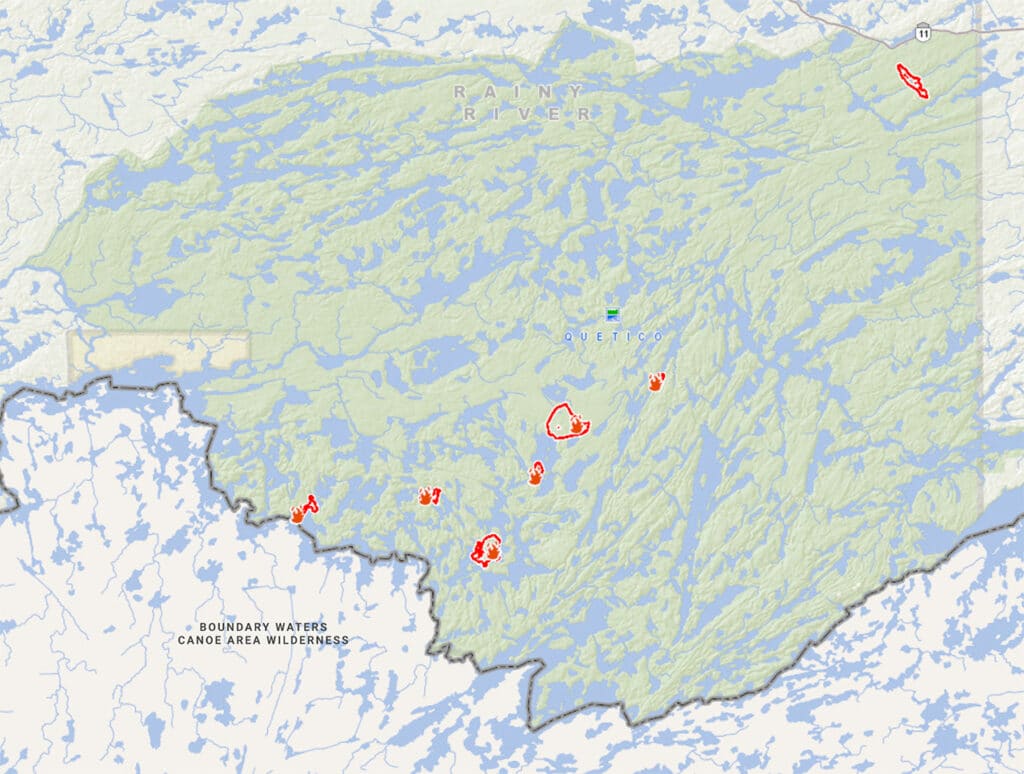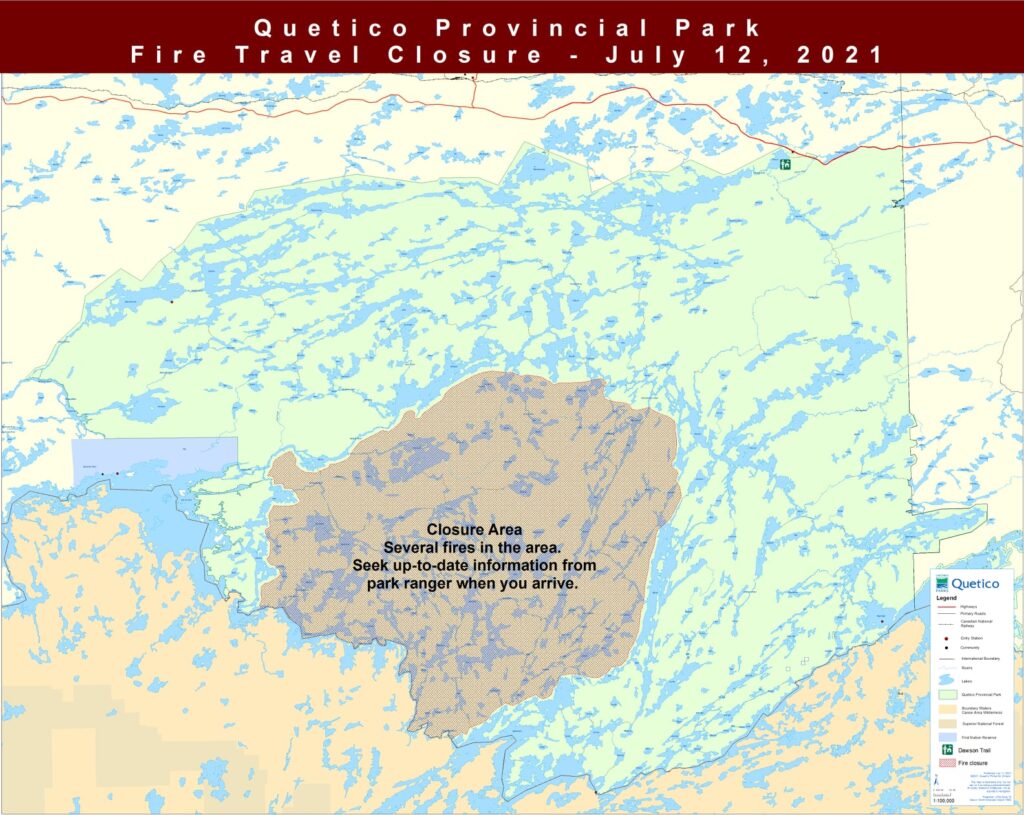Forest fires burning in the Quetico Provincial Park backcountry have resulted in the closure of a large part of the wilderness area. Multiple blazes are currently active, ranging from a couple acres in size to 1,600 acres.

The fires are generally located in the southwestern part of the park, including near the international border and the Boundary Waters Canoe Area Wilderness.
On Monday, Quetico’s managers announced that the parts of the park affected by the fires is closed to visitors. No camping or travel is allowed in the closed area.
Ontario’s wildland fire strategy calls for a flexible approach to managing fires, depending on available resources, risks, and benefits. Parks like Quetico have been identified as good places to let fires burn at times.
“Provincial parks and protected areas offer excellent opportunities to demonstrate the use of fire and educate the public about the ecological benefits of fire,” the province’s strategic wildland fire document reads. “Allowing fire to burn in these areas also provides opportunities for learning about the effect of fire on vegetation and wildlife.”
Little to no suppression is currently being attempted on Quetico’s fires, as other more dangerous fires are prioritized and the park’s boreal forest benefits from the flames.
This year’s hot, dry weather has helped create an intense year for fires across North America. In Ontario, there have already been 594 wildfires reported across the province. This time last year, there had been 378, with a 10-year average of 401 fires by this date.
“The resources that we have to deploy to fires are under great demand at the moment and the big challenge is knowing how to deploy those resources properly and appropriately to fires on the landscape and to maintain enough ability to respond to new situations,” Chris Marchand, a Ontario Ministry of Northern Development, Mines, Natural Resources and Forestry fire information officer, told Global News.
Quetico is in an area considered to be at “extreme” fire risk, the highest category. Natural Resources Canada says the forecast calls for continued dry weather occasionally interrupted by thunderstorms with more lightning than rain. The agency says it expects more fire ignitions across the region in the near future.
More information:
- Quetico Provincial Park Alerts
- Forest fires – Ontario Ministry of Northern Development, Mines, Natural Resources and Forestry
- National Wildland Fire Situation Report – Natural Resources Canada
- Wildland Fire Management Strategy -Ontario



